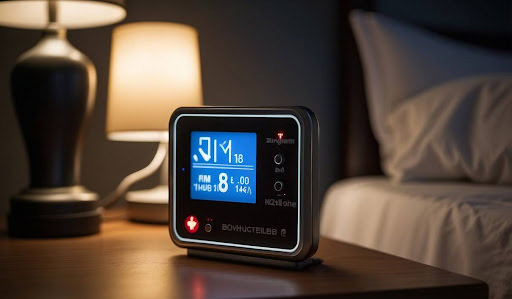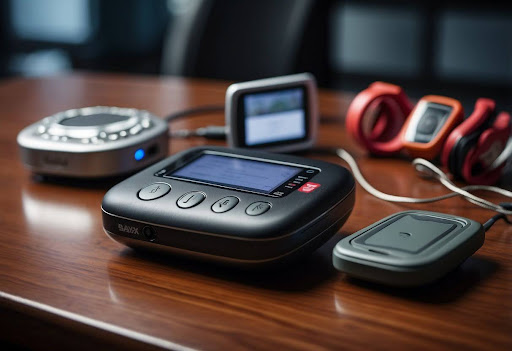
Medical Alert Devices: Essential Lifesavers for Seniors
Medical or life alert devices are crucial tools designed to help ensure the safety and independence of older adults. These systems allow users to quickly summon emergency assistance with the press of a button. For individuals at risk of falls or health emergencies, medical alert systems provide peace of mind to both users and their families.
Many modern devices come equipped with advanced features like fall detection, GPS tracking, and caregiver apps, making it easier to manage emergencies whether you are at home or on the go. By choosing the right medical alert device, you can maintain your independence while having the reassurance that help is always within reach.
Understanding the various options and features can help you select the best system for your needs. With expert reviews and comparisons, finding the right medical alert system becomes a straightforward task, ensuring you or your loved ones remain safe and secure.
Types of Medical Alert Systems

Medical alert systems are available in various types, each catering to different needs and preferences. These systems can be broadly categorized into in-home systems, mobile alert systems, and wearable devices.
In-Home Systems
In-home medical alert systems are designed for use within a residence. They typically connect to a landline or cellular service, providing a reliable means to summon help during an emergency.
These systems usually consist of a base unit and a wearable device, such as a neck pendant or wristband, allowing you to call for assistance at the press of a button. Options like Medical Guardian Home 2.0 and Bay Alarm Medical offer features such as long-range connectivity (up to 1,400 feet) and responsive call centers, ensuring prompt support.
Some in-home systems also include automatic fall detection, which can be a critical feature for individuals at risk of falling. To avoid falls also consider trying physio therapy. There are plenty of great options for Physiotherapy in Burlington.
Mobile alert systems offer the flexibility of on-the-go protection, utilizing GPS technology to provide location tracking and emergency assistance wherever you are. These systems are ideal for active individuals who spend a lot of time outside their homes.
Devices like Bay Alarm Medical SOS All-In-One come equipped with fall detection and GPS tracking, ensuring you can get help quickly if needed. Mobile alert systems connect via cellular service, making them a reliable option for those without a landline.
Monthly costs for these systems vary, with plans typically starting around $25 to $50, depending on features and services included.
Wearable Devices
Wearable medical alert devices come in various forms, including pendants, wristbands, and even smartwatches. These devices integrate seamlessly into daily life, providing constant access to emergency assistance.
For instance, products like MobileHelp offer wearables with features like fall detection and quick response times (often under a minute). Medical Guardian and Bay Alarm Medical also provide wearable options with enhanced functionalities such as water-resistance and long battery life.
These devices are designed to be comfortable and discreet, making them an excellent choice for those seeking both reliability and convenience in their PERS (Personal Emergency Response Systems).
Key Features and Technologies
Medical alert devices are equipped with advanced features designed to enhance safety and provide peace of mind. Key components include fall detection, GPS tracking, health monitoring, and efficient emergency response systems.
Fall Detection and GPS Tracking
Fall Detection: Many modern medical alert devices include automatic fall detection, which uses accelerometers and other sensors to identify when a fall has occurred. This feature can trigger an alert even if the user is unable to press the help button, ensuring timely assistance.
GPS Tracking: GPS technology is integrated into many devices, allowing for precise location tracking. This is particularly useful for mobile devices, ensuring that help can be dispatched quickly to the correct location. It can also be reassuring for caregivers wanting to monitor the whereabouts of loved ones.
Combined, these technologies enhance the safety of users, especially those prone to falls or who are often on the move.
Health Monitoring
Some medical alert systems offer health monitoring features. These may include heart rate sensors, blood pressure monitors, and other health metrics. The data collected can be shared with healthcare providers, allowing for better health management.
If your device supports health monitoring, you can keep track of vital statistics regularly. These measurements can alert you to potential health issues early, providing an additional layer of protection beyond emergency assistance.
Battery life is an important consideration, as many health monitoring sensors require more power. Ensure your device has a long-lasting battery or easy charging options.
Emergency Response and Support
In the event of an emergency, medical alert systems provide instant connection to a call center. Equipped with a speaker and microphone, users can communicate directly with a trained operator who assesses the situation and sends appropriate help.
Response time is critical, so choose a device known for its quick response time. Many systems offer 24/7 monitoring, ensuring that assistance is always available. Evaluate the quality of the call center and their response protocols to ensure reliable support.
For added security, some devices include a two-way speaker to allow emergency responders to communicate with the user directly, providing reassurance and reducing panic during critical moments.
Choosing the Right System
To select the most suitable medical alert system, evaluate your specific needs and budget, compare providers and their available plans, and understand any associated pricing and fees.
Assessing Needs and Budget
Consider the primary requirements for your medical alert system. Determine whether you need features like fall detection, GPS tracking, or specific response times. Assess any special needs that the user might have.
Budget is crucial. Prices vary, so identify how much you can spend monthly. Medical alert systems generally range from $20 to $45 per month. Equipment fees, activation fees, and additional costs for features like fall detection, which averages an extra $10 monthly, should also be considered.
Comparing Providers and Plans
Different companies offer diverse services. Compare their response times, customer service quality, and package options. Some well-rated providers include Bay Alarm Medical, Medical Guardian, and MobileHelp. Assessing user reviews and expert opinions can provide valuable insights.
Pay attention to details such as contract length, cancellation policies, and any warranty or protection plans. Evaluating these aspects can help ensure you don’t encounter unexpected issues or costs.
Understanding Pricing and Fees
Medical alert systems come with various pricing structures. Monthly service costs typically range between $20 and $45. Additional fees for equipment and activation can vary significantly. For instance, Bay Alarm Medical has equipment costs of around $213, with service starting at $49.95 a month.
Carefully review all potential charges, including activation fees, equipment fees, and costs for additional features like fall detection. Examining these factors helps in choosing a system that aligns with your financial constraints and needs.
Additional Considerations for Medical Alert Systems
It’s important to evaluate the integration capabilities for caregivers, the ease of installation and maintenance, and any legal and privacy concerns that may arise when using medical alert systems. Addressing these areas helps ensure both functionality and security.
Caregiver Integration
A crucial aspect of medical alert systems is how well they integrate with caregiver and family member workflows. Many systems now offer caregiver apps that provide real-time updates, location tracking, and emergency alerts. This allows caregivers to monitor the person’s status remotely.
Look for systems offering emergency contact features that automatically notify designated individuals when the help button is pressed. Systems that support multiple caregivers can be beneficial, especially for individuals who rely on a network of support. Shared access ensures someone is always available to respond, even if one caregiver is occupied.
Installation and Maintenance
Ease of installation and maintenance plays a significant role in the overall experience. At-home systems typically include a base unit that requires placement in a central, easily accessible location. These units should connect effortlessly to wearable devices like pendants, necklaces, or wristbands.
Consider systems with long battery life and backup options to ensure continuous operation during power outages. Look for options that require minimal maintenance to remain functional. Mobile alert systems are another consideration, with many utilizing cellular networks for reliable performance outside the home.
Legal and Privacy Concerns
Privacy is a key factor, especially when dealing with location tracking and personal health information. Ensure that the medical alert company complies with relevant privacy laws and safeguards user data.
Understand the legal obligations involved, especially for those living alone or veterans using government-subsidized programs. Clarity around who has access to information and under what circumstances is essential. Fortunately, many systems now provide robust security features to protect sensitive data, allowing users and their families peace of mind.
Conclusion
Medical alert devices play a crucial role in ensuring the safety and wellbeing of individuals, especially the elderly or those with medical conditions. These devices can provide peace of mind for both users and their families.
Several key features should be considered:
• Automatic Fall Detection: Essential for immediate assistance in case of a fall.
• GPS Technology: Helps locate users quickly in emergencies.
• Wearable Options: Whether as a pendant or wristband, comfort and ease of use are important.
Different systems come with varying costs and services. Some notable options include:

Each system offers unique benefits tailored to different needs. As you evaluate these options:
1. Assess Your Needs: Consider mobility, lifestyle, and specific medical conditions.
2. Compare Features: Look at readiness, response times, and additional services like telehealth.
3. Budget Wisely: Ensure the system fits your financial situation without compromising on safety.
Safety and reliability should be your top priorities in choosing the right medical alert device. Advanced features and responsive support can make a significant difference in emergency situations.







